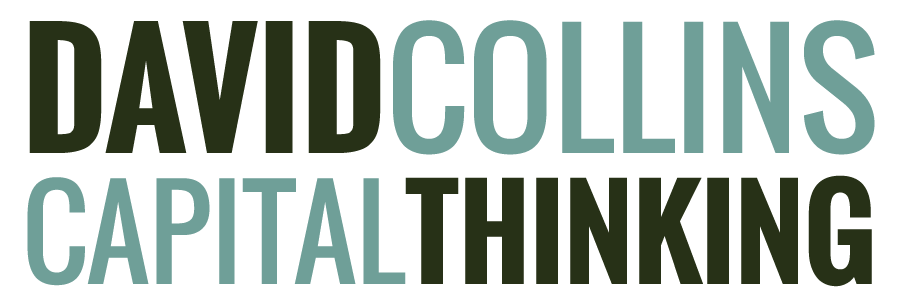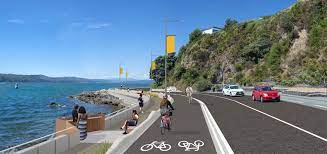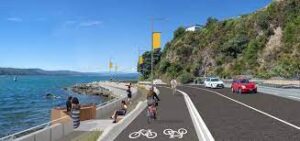As I wrote recently, Wellington City Council agreed to increase spending on Wellington cycleways by another $122m, bringing the total cost to $226 million. In addition, the government announced spending $785 million on a walk and cycleway bridge across Auckland harbour. At the same time, announcing the cancellation of the Mill Road upgrade to four lanes, thus embedding massive congestion in South Auckland for generations to come, while pandering to a minority of chardonnay cyclists in the wealthy suburbs of central Auckland.
Much the same can be said of Wellington’s problems. Julie Anne Genter did much the same when she quashed the second Terrace tunnel in Wellington via her controversial, unpublished letter condemning central Wellington to traffic congestion.
Bernard Hickey’s article of 7 June 2021 on the government’s muddled housing and infrastructure programme, stated the government is condemning the suburbs to congestion and a lack of housing supply by conflicting government policies. The government is conflicted in its approach to claim a climate crisis, while at the same time failing to take measures to improve infrastructure and congestion, and reduce land and house prices, as this will affect a large voter base, whilst also failing to educate that same voter base on new housing concepts. At the same time, property developers continue to build large houses with double garages. Whilst the government wants greater housing density, they will not build the infrastructure to accommodate this.
As Transmission Gully completes, increased traffic will arrive at the Terrace tunnel at the same time. This is not necessarily due to more cars coming into Wellington, but simply the system is more efficient further out and therefore there is more congestion closer to the tunnel. Two things are important. Firstly, traffic must move across Wellington efficiently to allow people to get to suburbs on the Miramar peninsula, airport and Island Bay. Secondly, to encourage more people to live in a dense inner city and the outer eastern suburbs, roading must be efficient, as well as cycleways, trains and buses. The consequence of not having efficient roading is that the government’s desired housing supply does not get built. Both current and future concepts of housing developments fail to materialise because property developers have no incentive to build them.
This becomes more problematic as the government encourages the switch to EVs (and hopefully hydrogen cars) and away from petrol cars, thus assuming cars are not going away. They are still the most efficient means of transportation from point a to b. As Judith Collins noted, “The government’s fixation on walking, cycling, and forcing people out of their cars is out of touch with modern New Zealand. Grant Robertson should try cycling across the harbour with groceries, sports gear and the kid’s netball team and see how that goes.” (Bernard Hickey 7 June, 2021).
Both the government and WCC refuse to approve doubling the Terrace tunnel and the infrastructure into and across Wellington to the Eastern suburbs because of this fixation on bikes, light rail and buses, while ignoring basic elements of roading that will compliment this fixation. Its an absurdity I cannot seem to understand. All transport systems should be complimentary, and not built at the expense of the other. However, due to current government policy, hundreds of thousands living in South Auckland and central Wellington will suffer from congestion for many years to come.
With some disbelief I noted Barry Soper on ZB Talk Back state recently that the government favoured congestion to encourage people to take buses, trains and cycle rather than sitting in traffic. Heather Du Plessis-Allan had to ask Soper to repeat what he had just said. If this is true, then it shows the arrogance of this government.
Finally, Michael Wood stated, “If the government had proceeded with Mill Road as originally scoped, it would have cost up to $3.5 billion and at peak produced six tonnes of CO2 emissions a day.” However, has the government considered the fact that as cars and trucks sit idle on this congested road, that CO2 emissions may be worse? “Personal-vehicle idling wastes about 3 billion gallons of fuel— generating around 30 million tons of CO2 annually in the U.S. “(US Dep of Energy). Though I note that other papers state those higher speeds on motorways also create higher emissions. “While it’s true that cars emit more carbon per mile while idling and in stop and go traffic than they do when cruising at 30 to 45 miles per hour, traveling at higher speeds is actually less fuel efficient and produces more CO2 per mile driven” (Streetsblog USA, 6 July, 2017). Further, has the government considered the loss of productivity and the economic cost while trades people, office workers and trucks sit idle in traffic, at both Mill Road and the Terrace tunnel? This is unlikely as this does not suit their narrative.
Footnote: On writing this, I heard that a heavily redacted paper has surfaced regarding a “long tunnel” being proposed for Wellington. Firstly, why the secrecy? Secondly, I have hinted at a tunnel being built under Wellington in my blog “The Cost to Re-Build Central Wellington Without Cars”. This would solve the many problems outlined above and remove much of the traffic in central Wellington and open the congestion to the Eastern suburbs and airport. Further, where this has been done in Auckland, Sydney, Melbourne and Brisbane, removal of traffic from the city centre has been beneficial by reducing congestion and travel times. Productivity has also improved with economic benefits. So why the secrecy on this, when there are so many positive outcomes?



